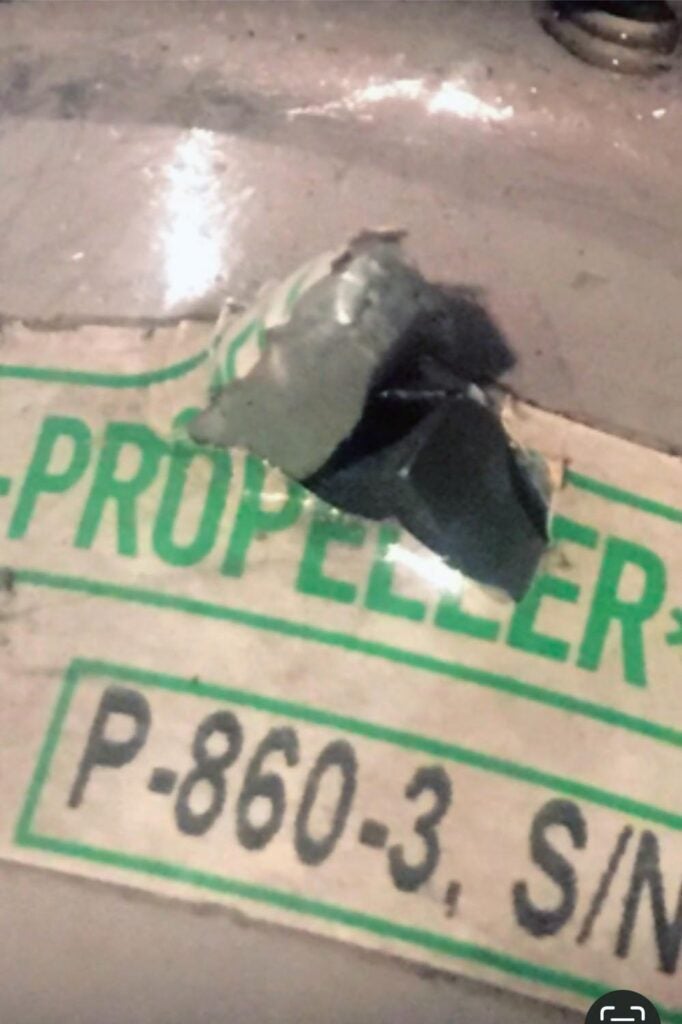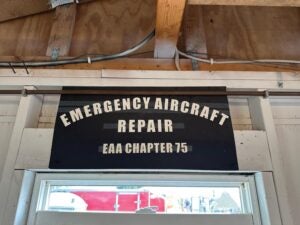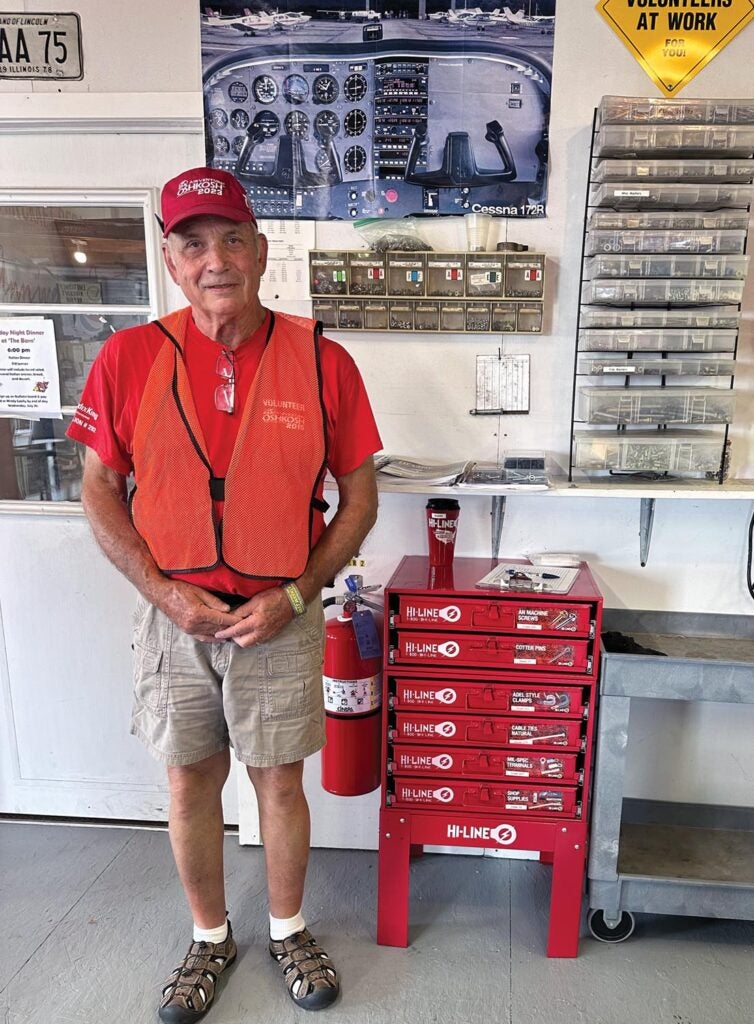
I will never forget the day. August 13, 2016. My wife and I were returning to Arizona from a nice trip to Utah and our timing was looking to be perfect for a gorgeous sunset view of the Grand Canyon as we passed along the eastern corridor of the SFAR. Our RV-10 had a little over two years in service and just under 300 hours in the logbook and had been performing wonderfully. Little did I know that we had a ticking time bomb on board. We had just leveled off at 11,500 feet for the airspace clearance when my cursed (say it as two syllables) prop governor decided to disembowel itself.
Our first indication of a problem was a sudden deceleration of the airplane. The oil indications, both pressure and temperature, were deceptively normal. The engine was running but something was obviously not right. The only initial indication was abnormally low rpm. What we didn’t know was that a balance weight inside the prop governor had broken loose inside the housing and had become a lathe-like cutting tool that had honed material from inside the cavity until the sidewall had been breached and high-pressure oil had begun spewing overboard.
A quick mental calculation of our options made a diversion into the closest runway, at the Tuba City Arizona (T03) airport, which we were basically only a few miles abeam, the logical choice. The decision turned out to be a good one because, although unbeknownst to us at the time, we only had a few minutes of operation left before the engine would run out of oil and seize.
We got safely on the ground, but the airport itself was a ghost town. We were the only airplane and people there. After shutdown, my first indication of what had occurred was a dinner-plate-sized puddle of oil on the ramp near the nosewheel. Further perusal revealed the breach in the side of the governor with the offending piece of counterweight protruding through the hole it had carved from inside.
In hindsight, getting the stricken airplane on the ground wasn’t particularly stressful. It was just flying the airplane to safety as decades of training and experience prepares us for. It was after getting on the ground, seeing that we were stuck on a now dark ramp in the middle of nowhere with a severely broken airplane and looking into my quietly supportive wife’s plaintive eyes that the reality of our predicament set in. That was when the knees began to shake and my mind began racing with “what now?” scenarios to the sounds of cash registers racking up huge totals.
Fortunately for me, I wasn’t that far from home and we have been blessed with some very talented and connected friends. The phone calls weren’t the easiest to make, but boy did they bring immediate comfort and relief.
The next morning, by car and by airplane, two guardian angels, Jim Wethington and Scott Williamson, brought us a new prop governor, a quantity of oil and all the tools, supplies and elbow grease necessary to get us in condition to ferry the airplane home for further inspection. I was humbled by their service and generosity and could not have extricated myself out of the situation in a timely fashion without their help.
My research revealed that there had been several similar incidents with that same MT governor, the most recent just seven days before mine. A few days later, a service bulletin was issued and the defective units removed from service.
Stuff Happens
Pilots generally and builders of Experimental/Amateur-Built aircraft particularly tend to be pridefully independent types who, while quick and eager to come to the aid of others, are loathe to ask for help. Nevertheless, rare is the experienced general aviation flier who doesn’t at some point find themselves in a situation where they have to call in some assistance to get moving again. A lot of us carry a pretty substantial travel maintenance kit, but I don’t think anyone carries a spare prop governor. If we carried spares and tools for every possible eventuality, we’d never get off the ground.
Airplanes break or get broken (two concepts that aren’t necessarily redundant). Stuff happens. Sometimes it is pilot error and sometimes it is fate continuing to hunt. Having a trip interrupted with an AOG (grounded aircraft) can be stressful and stress doesn’t always lend itself to making the best of decisions. It can also be expensive without even taking into account if, heaven forbid, injuries to ourselves and/or our passengers are involved. As much as we do everything in our power to avoid incidences and interruptions, they happen, often right when we least expect.

Help for the Asking
The good news when dealing with AOG challenges comes in the form of our amazing community. There’s nothing more valuable than a network of useful friends, acquaintances, fellow forumites and even perfect strangers who can be called upon for help and support when we need it. When help is truly needed, we need to take a deep breath, swallow some pride and make the call(s). When assistance is needed by another, we should lend a hand in any way possible. AOG service opportunities are extremely rewarding.
An AOG event can happen anywhere. On departure, on arrival or a diversion anywhere along the way. It can happen at the most basic backcountry strip or a sprawling international airport. Every different kind of situation poses its own unique challenges. It can and does happen at Oshkosh and quite often simply as a matter of statistics. X amount of operations will result in Y amount of incidents. I’m not sure which would be more stressful, diverting to a vacant airport in the middle of nowhere or closing an OSH runway or taxiway in front of tens of thousands of onlookers with cameras. With the thousands of flight operations crammed into that incredible week, the statistics tend to catch up. While the vast majority have a wonderful experience, a few, unfortunately, are presented with potential nightmare scenarios. That is my segue into the primary purpose of this article, which is to call attention to one particular group of guardian angels with servants’ hearts.
Oshkosh Emergency Aircraft Repair

Every year at AirVenture, a dedicated team of professionals stands by to assist their fellow enthusiasts in times of distress. We all hope and pray that we never need them, but if we do, they are a godsend. Started in the early ’60s by volunteers from EAA Chapter 75 from Quad Cities (KDVN), their “shop” is located on the south side of Wittman between the vintage and ultralight areas. Hours are loosely dawn to dusk but they answer phones 24/7 during the show.
While nicely equipped with tools, jacks, supplies, hardware and so on, there are limits to what they can do. They are not a repair station by official FAA definition and one thing they don’t do is sign logbooks, though if the need arises they can coordinate maintenance services elsewhere on the field or nearby where logbooks can be signed if required. For both certified and E/A-B, they “assist” owners with whatever needs to be done. Obviously, experimentalists have a flexibility advantage.

EAR longtimers (measured in decades) commented that on average they have six to seven “projects” going on at any one time. Tires, brakes, batteries and the like are common issues, but just about anything will be considered under the right circumstances, including cylinder work.
One advantage of the “big show” is the myriad vendors present, many of which bring stock for retail sale. Just about any accessory such as starters, alternators, vacuum pumps, avionics boxes and so on can be found on site and the EAR crew can assist with installation. In addition, both FedEx and UPS have on-site facilities if something needs to be ordered in quickly. The EAR crew can also assist in transporting disabled aircraft, and they also make “house calls” in their small fleet of special golf carts anywhere on the field. They have even participated in disassembling off-airport “sub-optimal mission results” to allow for easier removal and shipment of the carcass to its final destination.
No money changes hands, but the shop crew does accept donations from vendors, customers and visitors to keep stocked in hardware and consumables. If any OSH visitor needs to have their faith restored in the humanity of the greater community, they just need to visit this wonderful shop. They are happy to chat if they’re not too busy but be sure to ask where the donation kitty is before leaving. Most people in our community are good, but some are just passionate about helping others in need. Those are the types who gravitate to volunteering at the EAR. Volunteer staff range from those who have served for decades to young interns from school programs who are eager to learn.
God bless these Emergency Aircraft Repair guys and gals as there is no doubt that they have not only saved countless lives but also saved “misfortunate“ attendees collectively millions of dollars over the last 60-ish years. Our wonderful avocation is even better when we all strive to have each other’s backs.














Whoa. I’m assuming the engine seizing was due to the prop governor. Not the loss of oil pressure. When you installed the new part and re-started the engine, it had decent oil pressure? I hope this is an obvious answer.
Thanks for reaching out. The engine never seized, it just dramatically bogged down from the prop being nearly feathered. We were losing oil at an alarming rate but had no way to know that. Oil temp and pressure were normal the whole time. Fortunately,
we quickly landed before the oil was completely gone.
Wow, just wow. Glad you reached terra firma …
They were guaranteed to reach terra firma eventually, the question was in what condition…